From fossil fuels to renewable energy - Technology for tomorrow's world
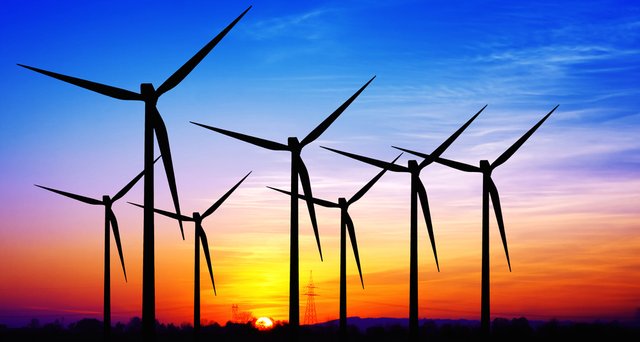
Fossil fuels are non-renewable, that is, they draw on finite resources that will eventually dwindle, becoming too expensive or too environmentally damaging to retrieve. In contrast, the many types of renewable energy resources-such as wind and solar energy-are constantly replenished and will never run out.
It's a question of time, as always, humanity will wait the last moment to change their energy extraction technology. For now, the need of renewable energy sources can be felt but the big change will realy occurs when the price of non-renewable energy will be too damn high or when non-renewable energy will be missing.

At this moment the change won't be a choice but a must have in order to continue using our technologies such as our smartphones, computers, car, plane, truck etc... and not replacing them with horses like in the middle-age.
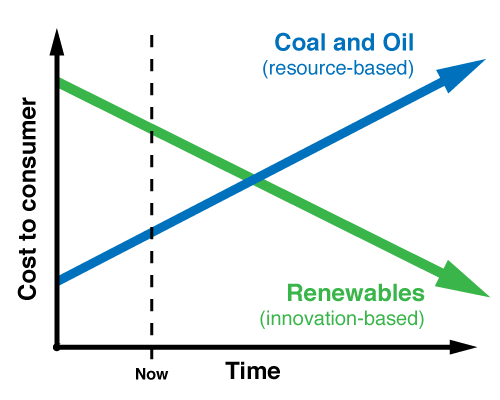
For now, we can still wait a few years before going into renewable energy sources but the change can't be done instantanously so we need to change progressively in order to ensure a smooth transition to keep the industry have all the energy it needs to continue it's activity.
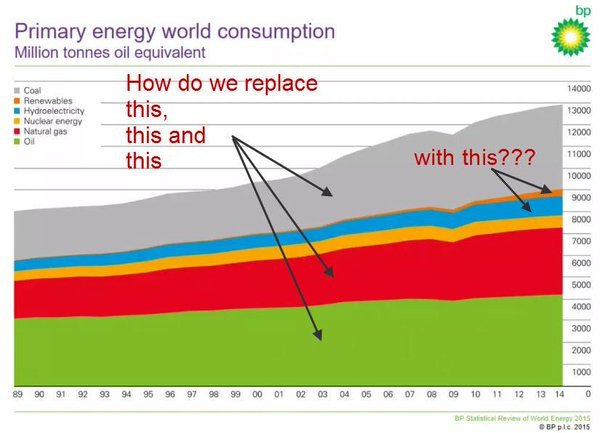
Because the way to a substainable energy sources is obliged and very long, it's obvious that we need a good startegy applied enough early to be ready when other energy sources will be missing.
How can we go from non-renewable to renewable energy?
We need to concentrate our time and ressources into the most efficient renewable technologies avaible in order to pay the minimum cost and have the biggest ammount of energy avaible, in other terms, make the best investment.

There is two way of seeing investment, one from an ecological point of view and the other from an economical point of view. Let's start from an ecological point of view called the energy return on investment (EROI).
EROI = Energy delivered / energy required to deliver this energy.
If you’ve got an EROI of 1.1:1, you can pump the oil out of the ground and look at it. If you’ve got 1.2:1, you can refine it and look at it. At 1.3:1, you can move it to where you want it and look at it. We looked at the minimum EROI you need to drive a truck, and you need at least 3:1 at the wellhead. Now, if you want to put anything in the truck, like grain, you need to have an EROI of 5:1. And that includes the depreciation for the truck. But if you want to include the depreciation for the truck driver and the oil worker and the farmer, then you’ve got to support the families. And then you need an EROI of 7:1. And if you want education, you need 8:1 or 9:1. And if you want health care, you need 10:1 or 11:1.
-Professor Charles Hall, the father of EROI.
So to ensure the same life quality as we have today, the minium EROI required is at least 11.
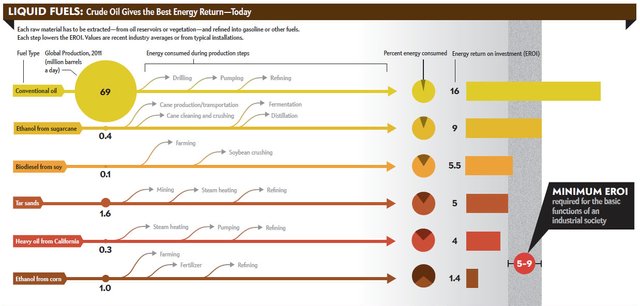
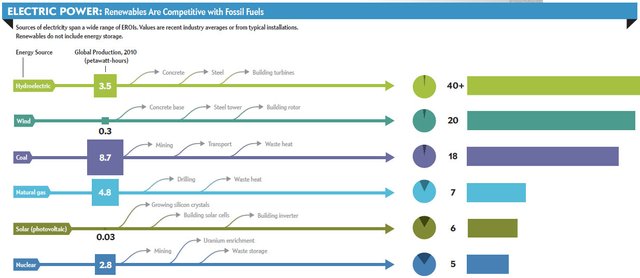
Source: Scientific American but only published at nature.com (don't ask me why)
So we can already put a cross on photovoltaic solar panels that have an EROI of 6, only wind and water turbine are interesting.
Comparing to photovoltaic solar panels, wind turbine are 3 to 6source times more efficient and water turbine are 6 to 42source time more efficient. Theses are pretty much amazing number, theses are even much effcient than liquid fuel energy sources.
Also with recent enhancement in the wind turbine technology field such as bladeless wind turbine, the efficiency is being increased while cost are bieng decreased.
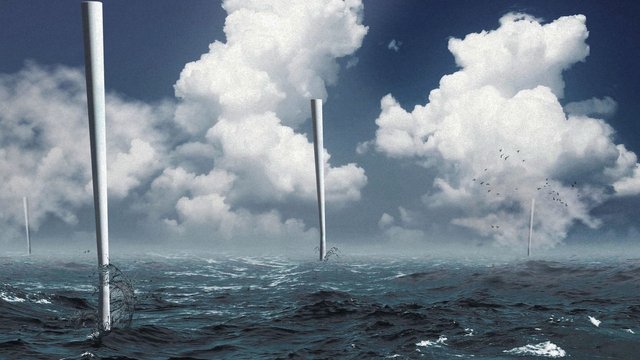
The best renewable energy stay water turbine followed by wind turbine, then come underwater turbine, then come other technologies such as geothermal and thermal solar panel followed by in the last position photovoltaic solar panels. This is the order which we should invest in to ensure the most efficient renewable energy transition.
Let's talk about the economical side of the coin.
As there is madness in the air, the economical return on investment is very different from the energy return on investment, by example, nuclear power is the cheapest energy even if it has the highest energy cost because insurance, waste storage and even sometimes demolition is included in country tax and not in energy cost, that make it seem that is the cheapest energy even if it is the most expensive, an other good example is photovoltaic solar panel, their are quite expensive but because of often great subvention there are quite economicaly attractive.
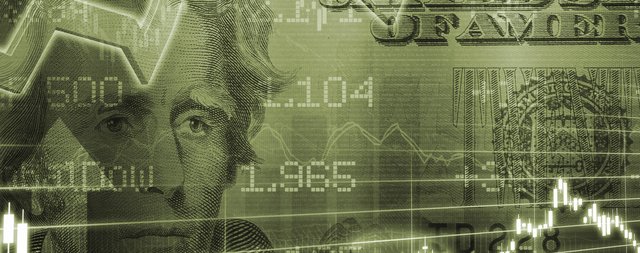
In an country where the cost of the energy is all-included in the direct cost of the energy and where subvention are given in the most interesting technology for the best transition, the economical interest would be quite the same as the EROI, but due to a bunch of corrupted and manipulated douchebag that run most of the countries in our world, the economical interest is quite different.

Renewable solar and wind energy sources have low operating costs, once generating facilities are built, there is little additional cost for producing energy each year. While this is an operating advantage over fossil fuels, it comes at the cost of higher capital expenditure.
The high capital cost of most renewable energy sources means that renewable electricity cost is sensitive to interest rates. High interest rates make renewable sources significantly less attractive when compared to fossil fuels, while low interest rates make renewables more attractive. Changing interest rates effectively changes the cost of renewable energy, since interest rates determine the cost of borrowing for initial capital investment.
source

For economic efficiency, all energy sources within a given market should have the same marginal cost. For example, if I could get solar electricity for $0.15/kWh and wind electricity for $0.10/kWh, wind electricity production cost should be 1.5 time cheaper than solar electricity production cost.
So investment in renewable energy depend on:
- The cost per kWh produced per technology (depending on interest rates and technology)
- The price given for the kWh produced per technology (depending on "subvention")
It's not possible to create a table for the economical efficiency because interest and subvention highly vary depending the given country and the given time. But without considering interest rates and subvention, here is a table with the cost range per kWh per technology.
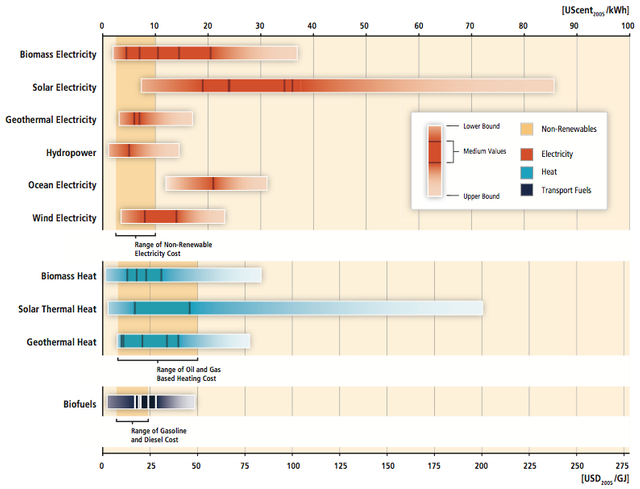
source: IPCC SRREN 2011
Excellent post dear friend @primerz a very interesting topic, congratulations for the great research and information search, you have a lot of reason when you say "as always, humanity will wait the last moment to change its energy extraction technology" for all Things are the same, we leave everything for the last moment, thank you very much for sharing all this information
Thanks for your comment, it was a pleasure to retrieve all theses informations.
Humans have the ability to think forward to the future but many of us don't use this ability, I think that's the main reason we do things late and make the same mistake a lot of time trough history...
This post has been ranked within the top 50 most undervalued posts in the first half of May 05. We estimate that this post is undervalued by $3.77 as compared to a scenario in which every voter had an equal say.
See the full rankings and details in The Daily Tribune: May 05 - Part I. You can also read about some of our methodology, data analysis and technical details in our initial post.
If you are the author and would prefer not to receive these comments, simply reply "Stop" to this comment.
Excellent and mindful post! I am currently living in Ireland, where they invested money into renewable energy, and by 2025 they are planning to rely 100% on renewable energy. Upvote!
Thanks, it's a great initiative, Ireland have huge wind !
Yes, they really know how to use what nature gave them here :)